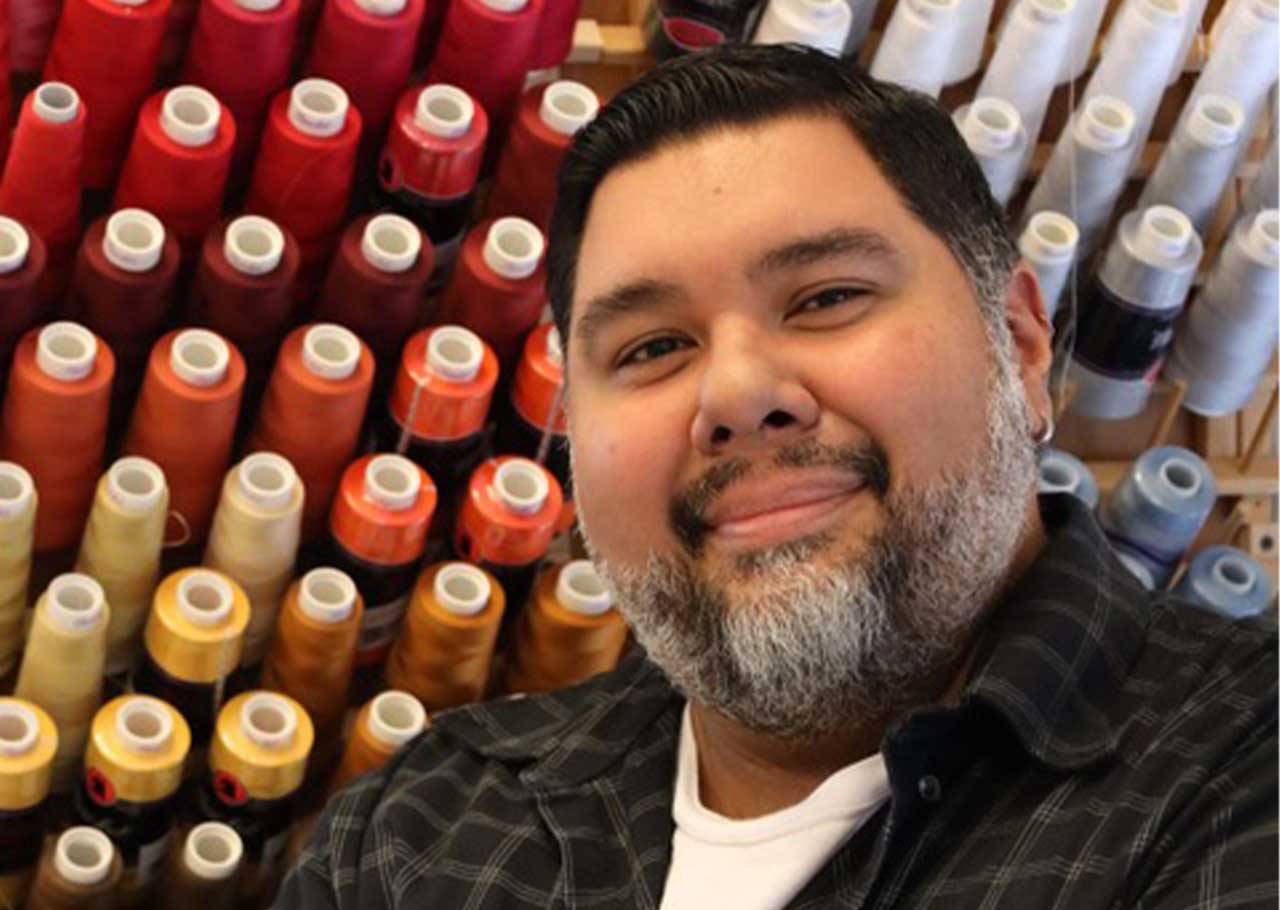Jason Estala
Department of Theatre
I am the assistant professor of costume design in the Department of Theatre, and I joined Oklahoma State University in 2020. Originally from El Paso, Texas, I received my Bachelors in Theatre Arts from New Mexico State University and my Master of Fine Arts in Costume Design and Technology from the University of Florida. My diverse experience as a free-lance designer, patternmaker, make-up artist, and craftsman has taken me all over the world. I have researched the fabric markets of India, hat making in London, and historic clothing collections in Italy, France, England and Spain. I have worked in many costuming styles such as opera, film, musical theatre, both modern and classical dance, marching band and entertainment uniforms. From large-scale operas to intricate film details, and from low-budget experimental theatre to massive 100,000 seat stadium halftime shows, I have explored a wide breadth of costuming.
Growing up I knew I wanted to teach and follow in my mother’s footsteps as an educator. My passion for teaching leads me to examine pedagogy and explore how we teach theatre design and costuming. Theatre storytelling spans from recreating historical periods to creating fantasy worlds never seen before. My research deals with preserving old world techniques that have been lost over the years while incorporating new materials and technologies that are evolving so quickly.
One aspect of my research involves millinery, the art of hat making, which unfortunately is a dying artform as with changing fashion trends people do not wear hats daily anymore. As a theatre costume designer, hats are a necessity in show design and theatrical storytelling. Productions often need hats and headwear from different time periods and locations from around the world. These items are not easily found or available and must be created. I not only work as a professional milliner to create hats and headwear, I strive to pass these skills on to my students so they will be more marketable in the industry and keep this art alive. This is also true with leather work. I was lucky enough to have grown up in the southwest where leathercraft was more common, and I spent a good deal of my childhood learning this craft. In theatre we use leather craft skills to produce goods in the form of armor, masks, belts, sword carriers and even shoe repair. I again have a focus on training my students in this artform that we must safeguard.
My personal goal of preserving these traditional crafts is balanced with my passion for incorporating emerging technologies and materials such as thermoplastics and 3D printing into my research and teaching. For example, I designed a show set in the Victorian era called “Silent Sky” where the main character wears a hearing aid. I researched late Victorian hearing aids and sound equipment and designed a digital 3D model replica. I then 3D printed the model and assembled it into a functional costume item highlighting the seamless integration of technology into the world of costume design. Another example can be seen in our production of “Macbeth.” I created royal crowns with the look of traditional hand forged metal out of thermal plastic. Using thermal plastics gave me the ability to mold the crowns like metal but keep them lightweight and safe for our actors to wear. This past semester I offered a special topics class in costume crafts which covered topics in these materials as well as leathercraft, millinery, fabric dyeing and foam work.
My overarching goal is to blend traditional art forms with modern materials and techniques, and it is the driving force that propels my artistic exploration. What fuels my enthusiasm and guides my research is my passion for imparting this fusion to my students.

